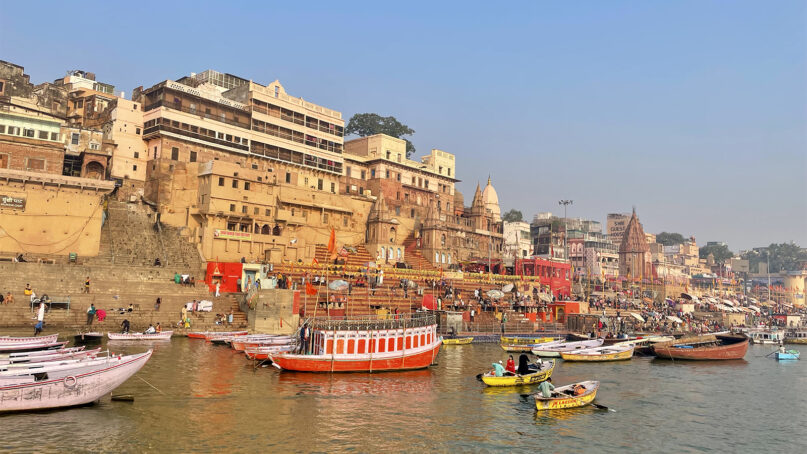VARANASI, India (RNS) — When Linda Hess took in the view from the bank of the Ganges River recently for the first time in 10 years, she hardly recognized the place she once knew.
“When I first came here, I was half spiritual seeker, half grad student,” said Hess, now a religion scholar at Stanford University. “Walking around now, I’m still trying to figure out my place.”
In 1976 Hess had moved from Berkeley to Varanasi, the city filled with temples that lies along the sacred Ganges, to conduct research on the revered 15th-century poet Kabir in his hometown. She stayed for three years among “other hippie types.”
Nowadays the guesthouse Hess called home is a pizza restaurant, its once unobstructed view of the Ganges blocked by a large stage. Devotional music blares on loudspeakers, hardly leaving mental space for the meditation Hess used to quietly perform in the river.
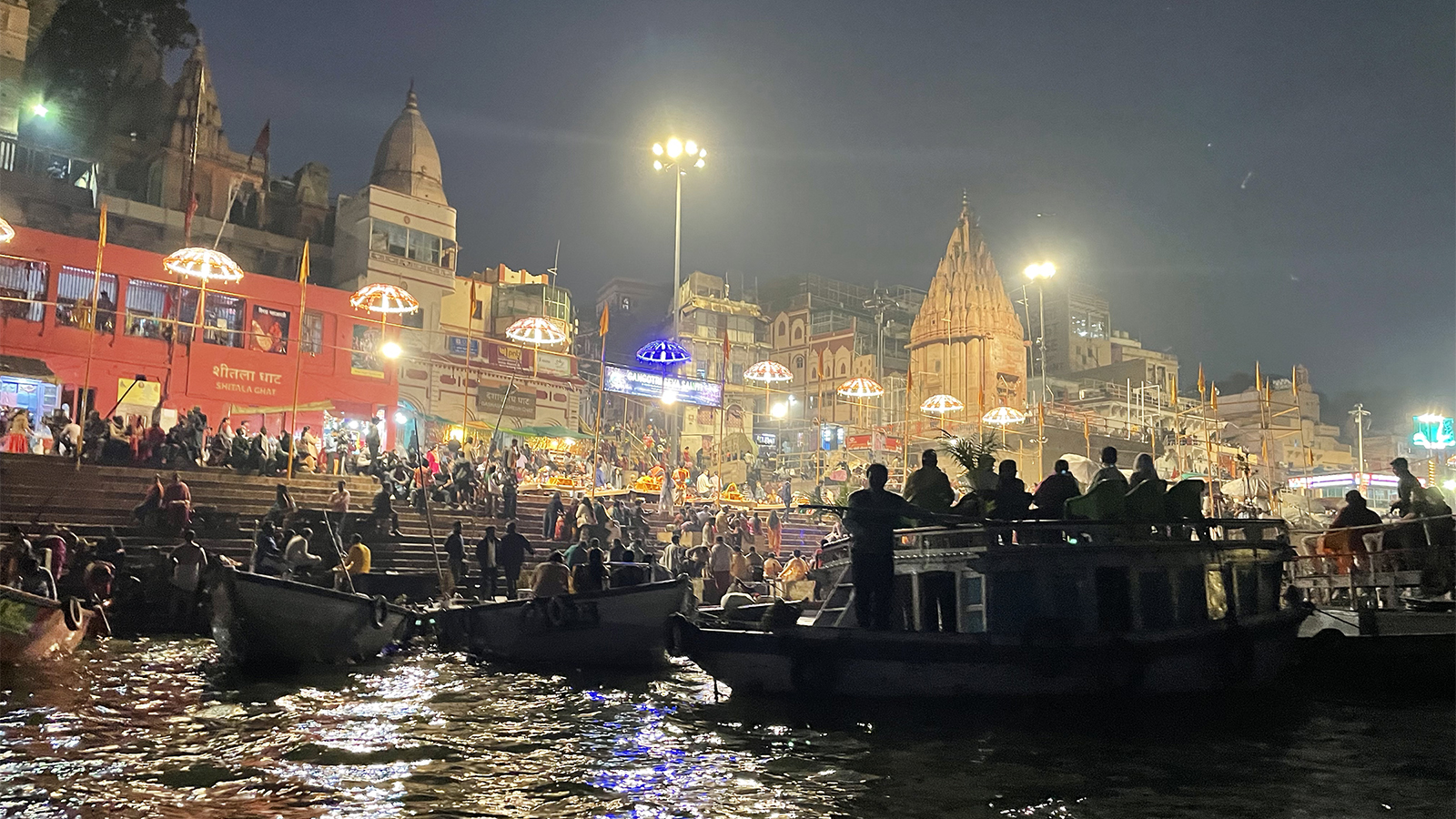
Boats fill the Ganges River at Assi Ghat in Varanasi, India, Dec. 11, 2023. (RNS photo/Richa Karmarkar)
“I don’t think the real spiritual seekers would be at this aarti (fire ritual) on Assi Ghat,” she said, referring to the largest of the city’s stonework access points to the river, where worshippers gather for ceremonies and devotions.
Assi Ghat, one of 84 ghats in Varanasi, is the most popular for foreigners, many of whom are devotees who have come to experience a highpoint of Eastern spirituality. But the ghat also draws others who smoke marijuana and listen to local musicians. Some are soul searchers from all over the world who can be found sitting on the steps, absorbing the sights, sounds and smells of India’s sacred pilgrimage site.
Religious tourism in Varanasi is on the rise after a dip due to the COVID-19 pandemic, according to government data. The boom is thanks in part to Prime Minister Narendra Modi’s efforts to revitalize Varanasi, which includes an $85 million corridor connecting the Kashi Vishwanath temple to the river and his namesake NaMo Ghat, complete with an open-air theater, food court and helipads.
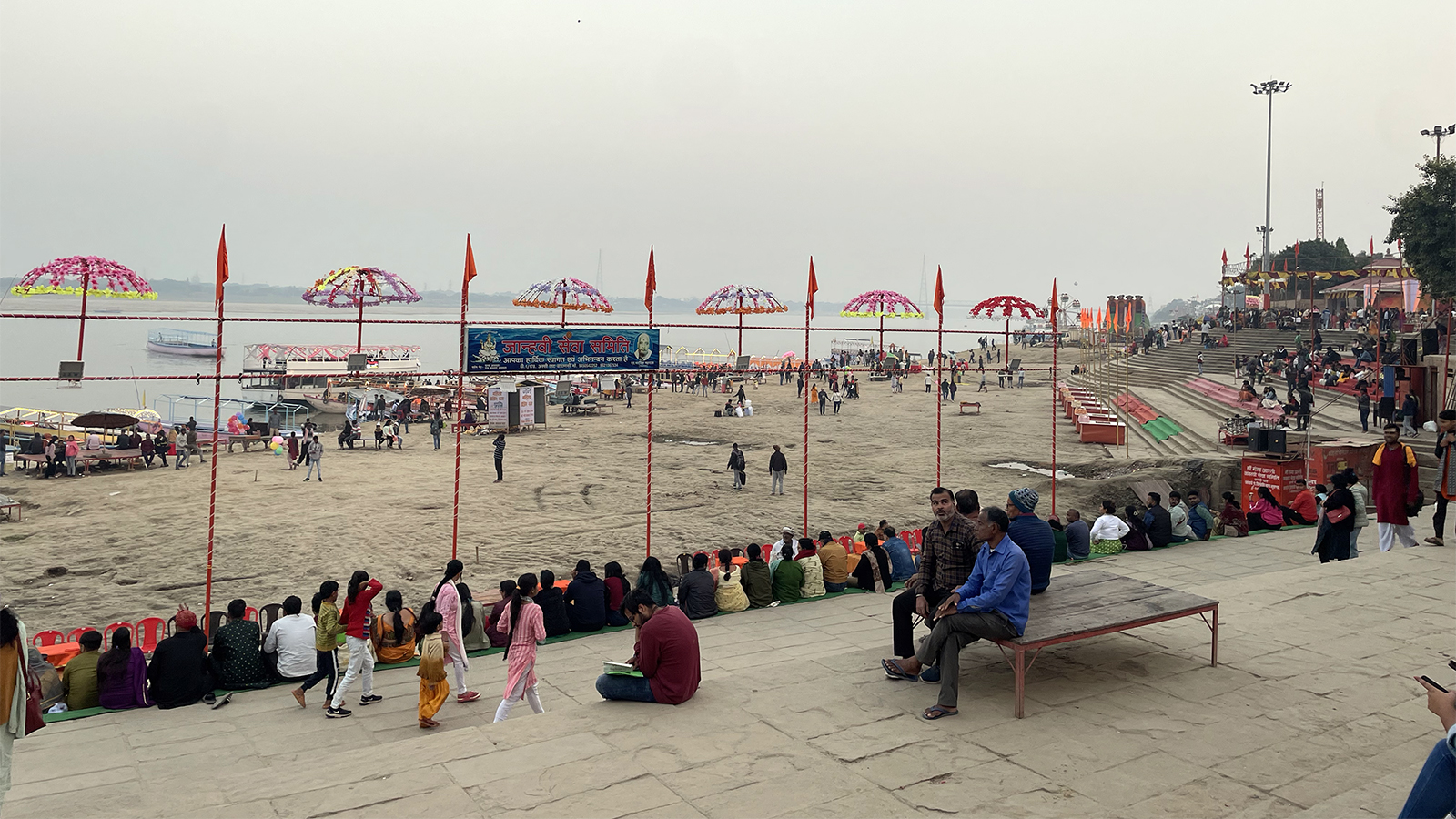
Visitors sit near the Ganges River at Assi Ghat in Varanasi, India, Dec. 11, 2023. (RNS photo/Richa Karmarkar)
“This is the specialty of India, that she accepts everyone, gives something or the other to everyone,” said Modi in a speech in July, in which he revealed that tourism-related employment increased by 34.2% in the city in the last year.
For those like Hess who remember the Varanasi of the past, the shiny new hotels, landmarks and tourist-centered rituals do little to preserve the sanctity of the ancient city.
“These changes are superficial. It’s all a big tamasha now,” she said, using the Hindi word that means both “grand show” and “commotion.”
Julia Jimenez came to Varanasi in her 30s from Spain, responding to what she said was a spiritual call. “Here, it felt like you were going back in time, or like time doesn’t exist,” she said.
Her friends, she said, couldn’t believe she could endure a hostel with only scarce hot water or toilet paper, but Jimenez sacrificed these “Western pleasures,” she said, for a peace of mind she couldn’t find elsewhere. The hostels, rather than the newer hotels, were all part of the spiritual experience.
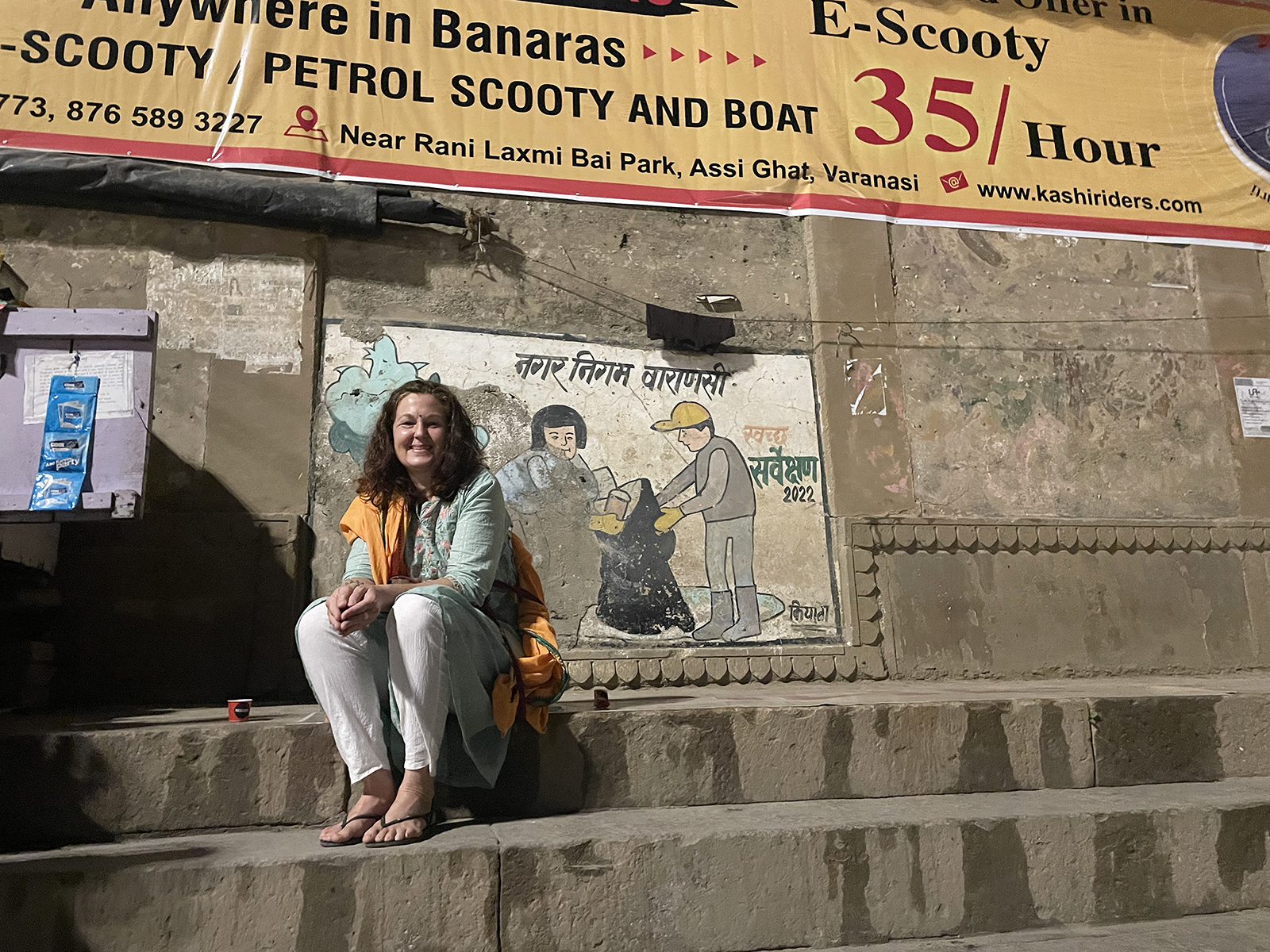
Julia Jimenez visits in Varanasi, India, Dec. 13, 2023. (RNS photo/Richa Karmarkar)
“People from Western countries like mine value these things above the rest,” she said. “But there is so much more to life than that.”
Yet after coming every year since 2012 with nothing but a backpack, the Buddhist practitioner says this visit will be her last for a long time. With all of its new additions, she says, Jimenez no longer feels the spiritual pull of Varanasi, instead getting a looming feeling that it’s time to stop wandering and settle down.
“I need to find a purpose,” Jimenez said.
What’s more, her familiar companions from other foreign countries have not come back after the pandemic, she said; most have “moved on” from their transitory periods in the city.
“So many people look outside of them for inner happiness, including myself,” she said. “They think Banaras will change them,” using an alternative name for the city.
“This time, I’ve realized that I don’t really need to go anywhere to ‘find myself,'” she added, making air quotes with her hands. “What I truly need has always been inside of me.”
For newcomers like Anna Woudenberg, a Hindi teacher who moved to Varanasi from the Netherlands in 2022, the people and culture of the city are more important than its external changes. But living in the highly populous city, now booming with domestic tourists, has not come without its challenges.
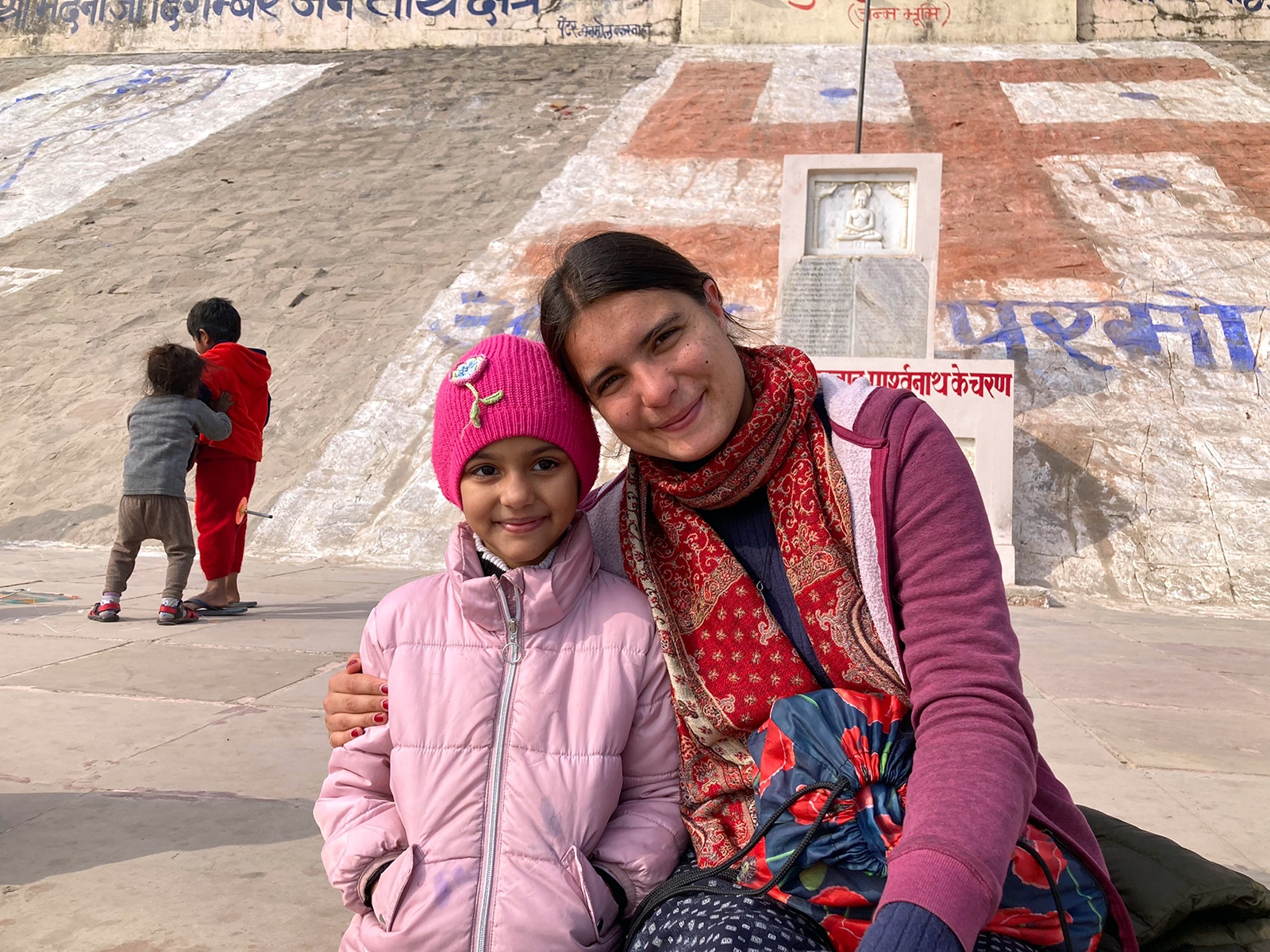
Anna Woudenberg, right. (Courtesy of Anna Woudenberg)
“Sometimes it really does feel like you’re in a different planet when you’re here,” she said. “As soon as you go out from the ghats, and you’re alone as a foreigner, you’re stared down all the time.”
Jimenez echoed the sentiments, noting that although she has become a familiar face around the ghats, she will never fit in, especially as the number of foreigners declines.
But for the 23-year-old Woudenberg, Varanasi’s ancient culture of music and art compelled her to stay for more than a year. The religious customs of yoga and meditation, which she now practices wholeheartedly, have inspired her to live every day with “more intention.”
“Living here, in some way, makes me feel very connected to life and what life is about,” she said. “This city particularly, it’s very human.”
Now, however, Woudenberg says it’s time to leave and figure out her next path, especially the “practical” aspects of life. What she will take away from her experience in Varanasi, she said, is mental fortitude and a stronger relationship to “something bigger than us.”
“I’ve heard a lot of people say Varanasi has changed so much, that it’s too busy, it’s too loud, it’s too modern,” she said. “But at the same time, to me, its energy stays. It’s something that can’t really leave.”
“Once you’ve lived here,” she added, “I’m not sure if you can be away from it for long.”
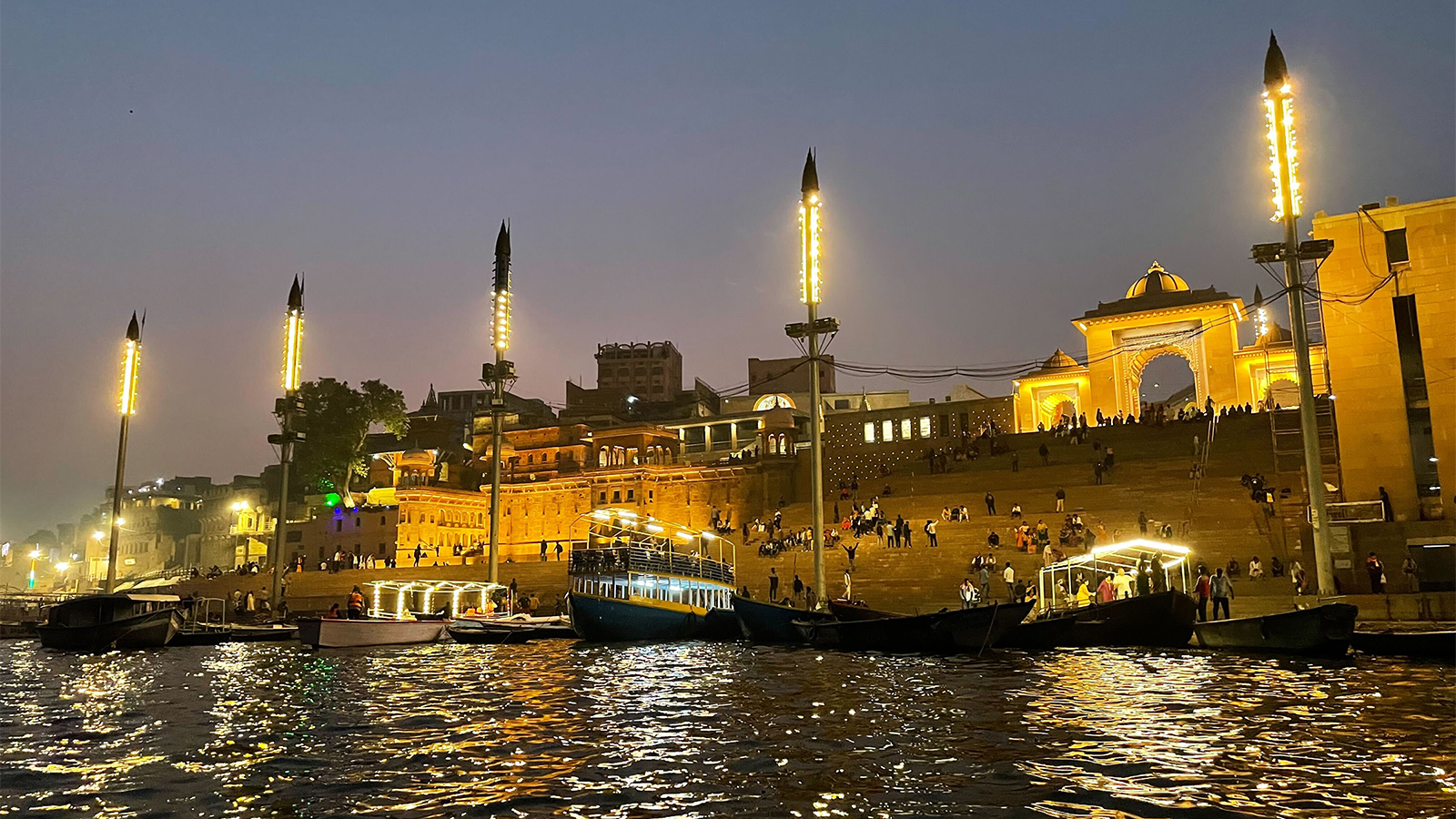
Boats line the banks of the Ganges River in Varanasi, India, in mid-Dec. 2023. (RNS photo/Richa Karmarkar)
